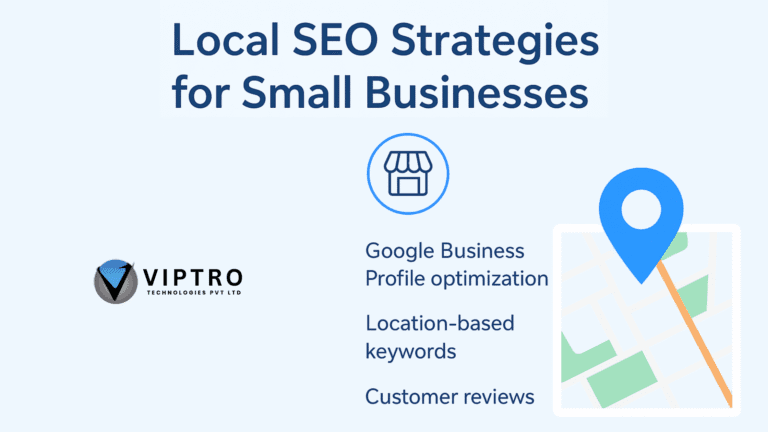Delivering SEO services isn’t just about boosting rankings—it’s about delivering clarity, confidence, and results to your clients. Whether you’re a freelancer managing a few local businesses or an agency with multiple clients, reporting is where your strategy meets accountability. A well-crafted SEO Report for Clients shows not only what was done, but what worked, what didn’t, and what comes next.
In this blog, we’ll walk you through a clear, step-by-step guide to creating SEO reports that clients actually want to read. From goal-setting to visuals, and from data sources to mistakes to avoid—this guide has you covered.
Why Client-Centric SEO Reporting Matters
Creating an SEO Report for Clients isn’t just about showcasing data; it’s about building trust, aligning on goals, and communicating real value. Most clients aren’t SEO experts—they don’t care about jargon or vanity metrics. What they want is a clear understanding of how your work helps their business grow.
Client-centric reporting ensures your communication matches their expectations. It builds long-term trust, improves retention, and demonstrates your strategic value. Ultimately, it answers the golden question: “Is my investment in SEO paying off?”
When reports are tailored to each client’s goals, you’re no longer just sending numbers—you’re telling a story that leads to decisions and growth.
What Clients Actually Want to See in an SEO Report
Performance Highlights, Not Jargon
Clients are busy. They don’t want to sift through paragraphs of technical language. They want key results front and center—like traffic spikes, improved keyword rankings, or increased leads. Keep it simple: start your SEO report with a high-level summary that’s easy to understand and relevant to their business objectives.
Key Metrics that Matter to Clients
While every client’s goals differ, the following metrics consistently provide value:
- Organic traffic growth (month-over-month or year-over-year)
- Keyword ranking report for top-performing and target keywords
- Conversions (form fills, calls, purchases, signups)
- Bounce rate and session duration
- Top-performing landing pages
Don’t forget to tie each metric back to what it means for the client’s business. For example, “This landing page now ranks #3 for [keyword], which drove 40% more leads this month.”
Visual Representation of Data
Even the most insightful data can be overlooked if it’s not presented well. Use visuals like graphs, pie charts, and tables to make your SEO Report for Clients more readable. Tools like Google Looker Studio allow you to build real-time dashboards with automated updates and colorful charts that simplify complex data.
Visual reporting improves clarity, speeds up understanding, and keeps your clients engaged.
Step-by-Step: How to Prepare an SEO Report for Clients
Step 1: Define Client Goals & KPIs First
Before building a report, have a strategy session to understand the client’s business goals. Are they aiming for more leads? Brand awareness? Product sales?
Once you understand the goals, set the right KPIs:
- For a successful lead: You can keep forms and track their submission, signups etc.
- For traffic growth: Focus on sessions, users, and bounce rate
- For awareness: Look at impressions, reach, and branded searches
Step 2: Gather Data from Trusted SEO Tools
The quality of your data determines the credibility of your report. Rely on proven SEO tools for accurate, actionable insights:
- Google Analytics & Search Console: Traffic, conversions, CTR, impressions
- Semrush: Backlinks, keyword trends, white label SEO reports
- Ahrefs: Backlink audits, domain authority, keyword rankings
- Screaming Frog: Technical audits, crawl errors, metadata issues
- Ubersuggest: Budget-friendly overviews ideal for freelancers
These tools help you collect a wide spectrum of data—technical, on-page, content, backlinks—all needed for a solid client SEO audit.
Step 3: Focus on Key Sections of the Report
Structure matters. A great SEO Report for Clients should include these key components:
- Executive Summary: Short overview of performance
- Traffic Insights: Organic sessions, top pages, user behavior
- Keyword Ranking Report: Current vs previous positions, winners & losers
- Technical SEO Audit: Site speed, crawlability, errors
- Backlink Profile: Referring domains, new vs lost links
- Recommendations: Strategic next steps
Add a progress comparison from previous months to demonstrate momentum.
Step 4: Explain What’s Working & Why
Clients appreciate transparency. Highlight what strategies are working—whether it’s a blog post that skyrocketed in rankings or improved site speed that boosted traffic. Explain why it worked in simple terms:
“Optimizing internal linking on your services page helped improve its ranking from #9 to #4 in just 3 weeks.”
When clients understand the “why,” they’re more confident in your strategy.
Step 5: Provide Actionable Recommendations
Data is just the beginning. Your report should guide the client on what to do next. Include clear, actionable steps:
- Improve meta descriptions on top 5 pages
- Build backlinks to underperforming service pages
- Add internal links to recent blog posts
- Optimize for new emerging keywords
The goal is to turn insights into action.
Step 6: Maintain a Clear, Consistent Report Format
Consistency breeds clarity. Use a standard template every month so clients can easily compare progress. This is especially valuable for SEO report for small business clients, who might not have time to relearn a new layout.
Also, provide reports monthly. Weekly reports tend to be overwhelming, while quarterly may feel too slow.
Tools to Create Client-Ready SEO Reports
Google Looker Studio – Free + Visual
One of the most powerful free tools. Integrates with GA and GSC, offering dynamic charts, filters, and shareable dashboards.
Semrush Reports – White-Labeled Automation
Perfect for agencies. Automate custom reports and add your branding for a white label SEO report experience.
Ahrefs Dashboard Export – Backlink & Keyword Insights
Use Ahrefs to generate comprehensive reports on keyword trends, backlink performance, and content gaps.
Screaming Frog Audit Reports – Technical SEO
Run a crawl of your client’s website and deliver a detailed technical client SEO audit with errors, redirects, and site structure.
Ubersuggest – Simple for Freelancers
Great for beginners and freelancers. Generate free SEO reports for clients covering keyword rankings, traffic, and backlinks.
Common Mistakes to Avoid While Reporting
- Overloading with Data – Stick to what matters most. Clients don’t need 50 pages of graphs.
- No Business Context – Always tie SEO metrics back to business goals.
- Inconsistent Formatting – Use the same format every time.
- Too Much Jargon – Use simple language and focus on impact.
- Lack of Next Steps – Your report should lead into the next month’s work plan.
Avoiding these mistakes leads to better communication, more trust, and better client retention.
SEO Report for Clients: Final Thoughts
Creating an SEO Report for Clients is more than just exporting numbers from tools. It’s about telling a story of progress, opportunity, and next steps.
Whether you’re working with a small business owner, an enterprise brand, or offering free SEO reports for clients, your goal remains the same: be clear, be helpful, and show measurable value.
Investing time into proper reporting builds loyalty, improves collaboration, and separates good SEO professionals from great ones.
Need help preparing your next client SEO report? Let us craft a custom, white-label SEO report template that saves time and impresses your clients.
→ Contact us to get started!





